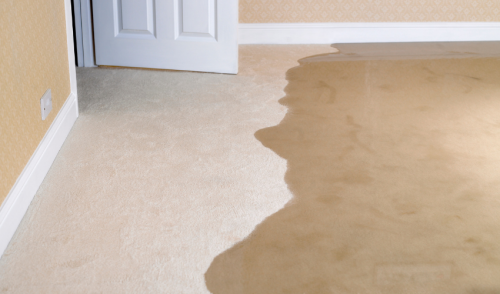{article.name}
Repairing Water Damage

- Share this:
- Share on Facebook
- Pin on Pinterest
- Tweet on Twitter
Water is essential for life, from proper body functions, cleanliness, and hygiene to temperature regulation, agriculture, cooking, climate, and so much more, that it would seem impossible to have too much water. When excess water goes where it isn’t wanted, however, the effects can be disastrous and the cleanup expensive. Knowing how to repair water damage can help you save no only your possessions and your budget, but also the time, stress, and frustration that flooding can cause.
How Water Damage Occurs
The most spectacular causes of water damage are natural disasters, when a hurricane pushes several feet of storm surge inland, a flash flood chases through a ravine, an offshore earthquake causes a tidal wave, or excess rain and snow melt causes flooding.
Less dramatic but equally devastating damage can occur over time, however, when water seeps slowly but inexorably into spaces where it shouldn’t be. This can happen when a toilet, bathtub, or sink may have a hidden leak, or valves and seals on appliances and water heaters fail and the water gets away. Poor irrigation drainage or underground sprinkler leaks can also cause water to pool next to a home’s foundation, gradually seeping through the walls or finding ways to enter through window wells, joints, or other entry points. Overflowing gutters, a backed up septic tank, and frozen winter pipes are other ways water can leak and cause extensive damage.
The Damage Water Causes
The damage caused by water leaks depends on several factors, including how much water is involved, how long it accumulates, and where it pools and puddles. Very visible leaks can often be noticed and corrected quickly, so damage may be minimal. Hidden leaks inside walls, attics, basements, or other less visible areas can stay undetected for long periods, however, and the damage they cause can be severe.
Different types of water damage include…
- Soil erosion that may loosen a structure’s foundation
- Wood softening and rot that compromises a structure
- Discoloration of paint, carpet, or other surfaces
- Electrical shorts
- Softening and damage to sheetrock, drywall, and other materials
With enough damage and without proper repair, a property can be completely destroyed by nothing more than water.
8 Steps to Repair Water Damage
Fortunately, it doesn’t have to be difficult to repair water damage, though the process can be time-consuming and expensive. By understanding the steps to repair the damage and getting started right away, both the necessary time and costs can be minimized.
To repair water damage…
- Always protect the safety of yourself and others. Do not enter unknown, unpredictable waters or attempt repairs you are not qualified to make. Always use tools safely and take all proper precautions to keep yourself, others, and your property protected.
- Identify the source of the leak and take immediate steps to stop more water from entering inappropriate areas. This may involve turning off valves, shutting off water supplies, or attempting to divert water that is causing problems. The more water that can be kept out, the less extensive the overall damage will be.
- Extract as much standing, excess water as possible from the area. Pumps can be hooked up to pull water out of carpeting or deeply flooded areas, or bailing may even be an option depending on the situation. Getting the water out of the area will help keep it from seeping even further into vulnerable spaces or soaking into surfaces.
- Move items out of the way of the water if possible and prudent. This can help protect furniture or belongings from potential damage and get them to drying as soon as possible. The longer materials are submerged, the more damaged they will become.
- Remove all unsalvageable material, including baseboards, soaked sheetrock or drywall, rugs, and even carpeting and carpet padding if necessary. Whether materials can be dried and reused will depend on how dirty the water was that impacted them, and how long they soaked before drying out.
- Dry the area completely, using powerful fans and dehumidifiers to remove all hints of water. Small, enclosed spaces will dry more quickly, so close doors or use plastic sheeting as a tent to minimize airspace and help speed drying.
- Once everything is completely dry, arrange for a mold inspection and take any necessary mitigation steps to remove mold. If water damage has been repaired quickly enough, there may be no mold present, but if mold has begun to grow, it can have very damaging health consequences and should be removed as soon as possible.
- Finally, take any necessary steps to repair the aesthetic features of the damaged space, such as reinstalling baseboard, repainting, or choosing new carpeting. This can be the ideal time for remodeling, or you can choose to restore the area to its original appearance.
Stop Water Damage From Starting
Water damage can be challenging to repair, and it is often easier to prevent water for causing damage in the first place. Always be alert to potential water problems, regularly inspecting plumbing and appliances to ensure there are no leaks. Check outdoor spigots, sprinklers, and irrigation often, and be sure there is proper drainage in areas where water might accumulate. Keep roof gutters and downspouts clear, and be aware of other flood risks that may be present in your area so you can take appropriate steps to protect yourself and your property. While it is useful to understand the essentials of repairing water damage, it is always best if you can stay dry and never have to use those steps!

Comments